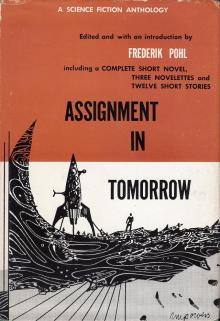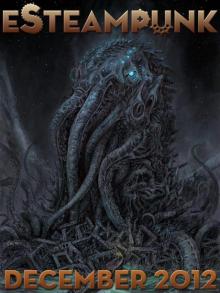Horror in Paradise Read online
Page 26
At least a score of vessels fitted out at Callao appear to have been for slaving cruises. From lonely Easter Island and that southernmost of the tropic lands, lofty Rapa, up to the Line Islands, and thence as far as the Carolines in the northwest, the pirates roved the Pacific, inveigling the trusting Polynesian people on board by promises, and when trickery failed, capturing them by force of arms. The ships were similar to those employed in the slave trade between West Africa and Brazil, and other American countries. Their holds were fitted with long rows and tiers of bunks, or rather shelves, for the accommodation of the ‘livestock’. They carried rice to feed the slaves, and were equipped with large boilers—one brig captured by the French in 1863 had three boilers—for cooking the rice and for condensing seawater for the tanks and casks.
The atolls of the Tokelau group (now under New Zealand’s jurisdiction) and the Ellice Islands, both groups lying northward of Samoa, were among the first visited, and hundreds of natives were stolen there. Penrhyn Island, Manihiki, Rakahanga, Pukapuka (Danger Island), the Cook Islands, the Paumotu or Tuamotu Archipelago, the Society Islands—at all of these some of the fleet of thief-ships called. Some places proved unfruitful in recruits—the Society Islands, under the French flag, for instance, and most of the Cook Islands, which are now British. Very few of the vigilant Raratongans fell victims, and none of the Samoans, so far as can be learned. There were many white residents there who would put the natives on their guard against the Spanish-American scoundrels. But the Tokelau people and their like, the atoll-dwellers, among whom there were few white people, fell very easily to the Peruvians’ wiles.
When islanders could not be enticed on board by promises of goods, armed parties were landed, the able-bodied men were captured, and those who resisted were shot down. Guns were turned on the canoes, and the terrified people swimming away were rounded up by boats’ crews. A trick often used when the natives came aboard unsuspectingly to visit and trade immediately a ship anchored in their lagoons, or lay off the reef, was to ask them down below to have a glass of grog and some biscuits and other white man’s food. They were taken into the hold or ‘tween-decks, and the hatches were shut down on them.
At Easter Island, that isle of mystery, seven vessels made rendezvous early in the slaving cruise. Their captains landed armed crews, gathered in some hundreds of natives, including the high chiefs and learned men, forced them into the boats, and took them on board. They then made a clean sweep of the island, carrying away all the taro, yams, sweet potatoes, and pigs and fowls, and capped their villainy by setting the houses on fire. Many of the poor people who were captured refused to eat or drink, and died of grief before the ships reached Callao.
At Niue, or Savage Island, two ships from Callao stole ninety men. Only one of these slaves, a young chief named Taole, lived to see his home island again. His narrative I shall give presently.
At the island of Mauke, in the Cook Group, the Auckland schooner Flying Fish in 1863 found the natives in great consternation over the deeds of these Peruvian craft. They feared they would be attacked, and desired that a man-of-war should be sent to cruise in search of the slavers. The schooner Osprey, which arrived at Auckland in April, 1863, from the Cook Islands, brought news that a brig, supposed to be Spanish, had visited Mangaia Island, the southernmost of the group, and had stolen away the principal chief’s son and several other men. Later, two other vessels, whose people said they were Americans, called and tried to engage two hundred men each, but failed.
Perhaps the most atrocious deed of all was the action of the captain of a bark which put many scores of sick natives on shore at Sunday Island, in the Kermadec group, to recover or die as they might. This was reported in 1863 by a vessel which called at Sunday Island on her way to Samoa. The slaving-vessel was a fast-sailing bark; she had a large crew of Spanish-speaking men from Peru and Chile. This was one of the vessels which had kidnapped natives from Niue. They would probably have had a better chance of recovering from the sickness, whatever it was, on shore, than in the crowded, unsavory ship, but they were callously left there marooned on an all-but-desert island, where nearly all of them died. The epidemic spread too to the family of the one white settler on the island, and his Samoan wife and several children died.
For one particularly vile crime there is no parallel even in the African slave trade. This was the sweeping-off of the Nukulaelae people, in the Ellice Islands. Nukulaelae (or the Mitchell Islands) is a coral reef and lagoon with ten beautiful islands. Before the visit of the Peruvian slavers the population of the atoll was four hundred and fifty, all living in peace and plenty, a happy primitive folk; they had been christianized by native missionaries from Samoa. When H.M.S. Basilisk visited the group in 1872 the population was seventy. The story of the great piracy was told to Captain Moresby by the only trader there, a German. He went from Nukulaelae on a cruise to Samoa and when he was away, in 1864, the man-stealers came. He returned to find only fifty worn-out people and children; all the rest had been kidnapped by the ruthless Spanish-Americans. The story told to Moresby was that three large barks, flying the Spanish flag, had appeared off the atoll, and an old man landed and told the natives that the vessels were missionary ships. He invited them on board to receive the Holy Sacrament. In simple faith the islanders went off in their canoes, all the able-bodied men. They were made prisoners and put into the hold. Again the old scoundrel landed and told the women and children that the men had sent him for them. They too went off to the black ships and were thrust into the hold of captivity. Then the wicked ships sailed away. None of those left on shore knew where their friends had gone; they vanished over the horizon. Long afterwards it was found that they had been carried off to Peru; but not a word ever reached Nukulaelae from the stolen people. They disappeared from all ken. “It was sickening,” Captain Moresby wrote in his account of his voyage, “to hear the tale told on the spot which had seen all this sorrow.” Only two men, one of whom the captain saw, escaped from the thief-ships; they jumped overboard and swam six or seven miles back to the island.
Two or three of the raiders received something of their deserts. In 1863 the French naval authorities at Tahiti had three captured slaving-vessels in Papeete harbor. One of these, the Cora, was seized by the natives at Rapa Island. One of the captains was sentenced to ten years’ imprisonment and another to five years. It would have been a fitting and dramatic retribution had they been hoisted to the yardarms of their own black craft, “rigged with curses dark,” and sent to the bottom with the scuttled pirate-ship. Unfortunately it does not appear that any of these sea ruffians of the ‘sixties were hanged for their crimes.
Thomas Dunbabin
Bully Hayes and
Ben Pease
Among the many contributors to the facts and legends of the buccaneering career of William Henry Hayes (1829-1877) was Thomas Dunbabin (1883-1964), journalist and author. Born in Tasmania, Dunbabin was selected as a Rhodes Scholar at Oxford in 1906. On his return he worked on Sydney newspapers. During World War II he served as press attache at the Australian Legation at Ottawa, and later was director of the Australian News and Information Bureau in London and attache in New York.
His best known book is Slavers of the South Seas (1935), from which “Bully Hayes and Ben Pease” is taken.
AS BLACKBIRDERS, William Henry (Bully) Hayes, once of Cleveland, Ohio, and Benjamin Pease, formerly a lieutenant in the United States Navy, were apparently no worse, and perhaps no better, than scores of others in the trade. Yet these two picturesque, plausible, and daring ruffians stand out from the swarm of blackbirders, Australian, English, American, French, Peruvian, Chilean, who harried the Pacific Islands. Hayes in particular had a certain daredevil and dashing touch about his villainies that marked him off from the crowd of adventurers and riffraff that haunted the South Seas in his day. Like Pease and so many others, he was a stealer of men and of women.
He swept off the people of lonely islets to sell them into slavery. He was also a thorough-
paced buccaneer, a sea-robber, a man of many disguises and of many moods. He ranged far and wide over the Pacific, turning up in the most unlikely places and doing the most unexpected things.
His career, too, lasted far longer than that of the usual South Seas pirate. From first to last he was active in the Pacific for nearly twenty years. He had something of the grand manner, and it is no wonder that a Bully Hayes legend has grown up around him.
Hayes was a tall, powerful, upstanding fellow, with a pleasant, open face. Like that stout, smiling contemporary villain of fiction, Count Fosco (whom he resembled in his love of canaries), he went bald early. One sinister touch about him was that the top of his right ear had been bitten off. This fact, however, was concealed by the fact that he wore his hair long and covered his ears. Though he was bald on top of the head he had a luxuriant growth of brown hair at the sides. And he wore a full beard.
Hayes was always well-dressed in the sea-going fashion of the day. Unlike most of the blackbirders he did not drink. He used to say that he could not have made the reputation that he had, and have escaped justice for so long, if he had not been strictly temperate. He had a friendly, plausible manner except when he fell into fits of ungovernable rage. These became more frequent in his later years. Towards the end of his career he shot, it is said, several persons in these accesses of temper. He always professed a becoming sorrow after these events.
A writer who saw Hayes when he brought the brig Rona into Hokitika, New Zealand, in 1864—quite early in his Pacific career—describes him as a “stout, bald, pleasant-looking man of good manners.” He pictures this dreaded blackbirder and buccaneer as walking about the wharf followed by three white poodle dogs. He was fond of pets, especially of small birds. Like his partner, Pease, Hayes was a marrying man. This observer states that in the cabin of the Rona sat the two white wives of Hayes, each with a child.
The elder Hayes is said to have been a bargeman on the Mississippi. And it has been asserted that William Henry worked with his father till he was a strapping lad of eighteen. Then, longing for wider waters than the Mississippi, he ran away to sea. With him went $4,000 from his father’s strong box. Where he went for several years and what he did is not recorded. In 1858 he appeared at Hawaii, having been put ashore, perhaps with good reason, from the ship Orestes. Early in 1859 he went to San Francisco. Two months later he came to Kahului, on the island of Maui, in command of a brig bound for New Caledonia. While bargaining for cattle he was taken in charge by Treadway the sheriff for having entered a closed port without a permit.
Hayes put the blame on his mate for not telling him that it was necessary to enter at Lahaina before coming on to Kahului. He invited Treadway to dinner on the brig, and asked if he would pilot the vessel to Lahaina. Once outside the harbour, Hayes coolly told Treadway that he could either come to New Caledonia or go ashore in his boat, which was alongside. The sheriff went ashore. Next mail brought papers to the United States Consul authorizing the arrest of Hayes and the seizure of the brig.
Hayes had landed in Frisco with fifty dollars—borrowed when on the beach in Hawaii. With this as a basis of credit he had bought the brig, shipped a crew, and fitted the vessel for sea. His actual out-of-pocket expenses were thirteen dollars for water. For this he had to pay cash. This brig was later sunk off Wallis Island. Hayes and others made their way to Samoa in the boat.
Hayes seems to have been seldom long without a vessel. The brig Rona, in which he visited Hokitika in 1864, belonged to Lyttelton, New Zealand. It is said that Hayes bought her on terms in Wellington. He then persuaded a merchant in Auckland to fit her out with a cargo for the islands. The merchant’s son shipped as supercargo. When they were well out to sea Hayes turned his supercargo adrift in a dinghy. One of the tricks he played when he reached the islands was to kidnap two native chiefs and to keep them on board till the natives filled his vessel with copra. At Hokitika Hayes held a sale of South Sea Island goods and curios. He sold for cash and most of the goods were to be delivered next morning. But when the morning came the Rona had gone.
During 1868 Hayes, still master of the Rona, landed one hundred and fifty natives of Niue or Savage Island at Tahiti to work on plantations. Their removal from the island, and especially the clandestine departure of the women, was carried out against the laws of the island. The missionary on Savage Island, writing on October 20, 1868, mentions that Hayes was there in the Rona. His ostensible purpose was to buy pigs for Tahiti. But pigs were a secondary object, his primary purpose being to secure a cargo of men and women. Hayes had previously stolen a number of women, many of whom were mothers and wives, and children were left behind uncared for.
Hayes seems to have kept the Rona for a period quite without parallel in the case of his other vessels. He seems to have been a reckless navigator; it was a case of “easy come, easy go” with his craft. He usually stole the vessel and was given to piling it up on a reef before very long.
In 1869 we find Hayes associated with that other choice scoundrel, Benjamin Pease. It has been claimed for Pease that he was the first man to import island labor into Fiji. Hayes became master of the brig Pioneer (also called the Leonora), of which Pease was allegedly the owner. The two worked for a time in the North Pacific. Then their ways diverged.
But they met again at Samoa. Hayes was by this time in command of the schooner Atlantic and had been blackbirding and trading, in his own peculiar way, amongst the eastern islands. As a result of a specially audacious bit of blackbirding the Atlantic was seized by the British consul at Apia, John L. Williams.
In a report dated March 11, 1870, Williams tells us something of the blackbirding methods of Hayes. He had first of all kidnapped a score of natives of Danger Island, intending to sell them in Fiji. These natives were utterly useless as laborers, for when they could not get their accustomed food, consisting mostly of coconuts and fish, they died. Of the twenty whom Hayes had taken on board his schooner, seventeen were dead when he called at Apia and the other three were dying.
Hayes had then gone to Manihiki, where he had kidnapped a number of lads and girls, intending to sell them in Fiji. Apart from kidnapping these people Hayes had, the consul reported, robbed and defrauded them, taking coconuts, mats, and hats with no intention of paying for them. Promising to pay for the cargo at a neighboring island, Hayes had enticed a large number of natives, young and old, on board the Atlantic. He had then turned out of the vessel the older and less valuable natives.
A touch of compassion on the part of this hardened kidnapper proved his undoing. The evidence on which the consul acted in arresting Hayes and releasing his blackbirds was supplied by Moete, a Catholic native of Manihiki. Moete was a middle-aged native who with his wife and some of his children had gone on board the Atlantic to sell coconuts. When the schooner was about to make sail with the kidnapped lads and girls, Hayes ordered Moete and Toka to be sent ashore with the other older people. They loved their children so much that they could not bear the idea of being parted from them, perhaps for ever. So they begged to be taken into captivity with the children if the latter could not be released. Hayes allowed Moete and his wife to stay on board. Moete also told the consul that a teacher at Tahiti sent on board the schooner two little girls as a present to Hayes. Knowing that Hayes was a desperate and resourceful ruffian, Williams, who possessed no real force, did not quite know what to do with him. Williams desired to hold him until a war vessel arrived on which he could be sent to Sydney. In the meantime he did not venture to put Hayes in the calaboose but had him kept under surveillance. Just then Ben Pease arrived in the brig Leonora, or Pioneer. Hayes pointed out to the consul that the chronometers of the Atlantic required rating and secured permission to take them on board the Leonora for that purpose. When the consul woke up next day the Leonora had gone and so had Hayes. It was All Fools’ Day, April 1, 1870.
After describing how Hayes had escaped from Apia on April 1, 1870, in Pease’s brig, Williams says that the Pioneer visited Savage Island where Pease
, by means of a forged order, obtained cotton and coconut fiber to the value of £300, the property of J. and T. Skinner of Sydney. After this robbery the two rascals called at Savau in Samoa, where they obtained three thousand yams from a British trader and left without paying for them. Hayes was in the habit of landing an armed party on any island where he could find coconut oil and taking it to his vessel, threatening to fire on any one who interfered.
The stolen goods seem to have been sold in Fiji. The Leonora turned up at Shanghai with both Hayes and Pease on board. Within ten days Pease was in prison, charged with murder. Hayes fitted the Leonora for sea. He paid only one bill, that for the spare mainyard. Then he went down the China coast, levying blackmail on the villages as he went. He put into Saigon, where he was chartered to carry a cargo of rice to Hong Kong, via ports. At one of these ports on the way, the owner of the rice went ashore on business. Hayes made sail, leaving the owner there, and sold the rice at Bangkok on his own account. A steamer with the owner of the rice on board made Bangkok just after Hayes had gone.
In due course Hayes drifted back to Samoa, where he was again arrested. This time the action was taken by Captain Meade of the United States cruiser Narragansett. As no evidence against him seemed to be forthcoming, Meade set Hayes free. Then Hayes persuaded Meade to give him a set of sails. A little earlier in his career Hayes commanded a black brig called the Water Lily, which may have been the Pioneer or Leonora under another name. He was blackbirding in the Western Pacific in her. It was suggested that he lent this vessel to headhunting natives, carrying them on their raids. Probably this accusation was unfounded.
Hayes seems to have had an objection to Frenchmen. He bargained with the French owner of the schooner Giovanni Apiama for a share in the vessel. Hayes was to pay a sum in cash and to throw in a share in certain trading stations. One day as they sailed past a lonely islet the Frenchman was struck from behind and stunned. He woke up on shore with the schooner standing away under full sail Hayes then, so it is said, entrusted the stolen schooner to a skipper named Pinkham, and never saw either the vessel or Pinkham again.

![[What Might Have Been 02] Alternate Heroes Read online](http://i1.bookreadfree.com/27/what_might_have_been_02_alternate_heroes_preview.jpg) [What Might Have Been 02] Alternate Heroes
[What Might Have Been 02] Alternate Heroes![[What Might Have Been 01] Alternate Empires Read online](http://i1.bookreadfree.com/01/what_might_have_been_01_alternate_empires_preview.jpg) [What Might Have Been 01] Alternate Empires
[What Might Have Been 01] Alternate Empires SEDUCTIVE: A Contemporary Romance Anthology
SEDUCTIVE: A Contemporary Romance Anthology A Year of Love
A Year of Love Super Daddies: A Naughty Nerdy Romantic Comedy Anthology
Super Daddies: A Naughty Nerdy Romantic Comedy Anthology Mystical Xmas: Paranormal Romance Anthology Box Set
Mystical Xmas: Paranormal Romance Anthology Box Set![[What Might Have Been 04] Alternate Americas Read online](http://i1.bookreadfree.com/06/what_might_have_been_04_alternate_americas_preview.jpg) [What Might Have Been 04] Alternate Americas
[What Might Have Been 04] Alternate Americas 9 Tales of Space and Time
9 Tales of Space and Time Assignment in Tomorrow
Assignment in Tomorrow![[What Might Have Been 03] Alternate Wars Read online](http://i1.bookreadfree.com/i/03/16/what_might_have_been_03_alternate_wars_preview.jpg) [What Might Have Been 03] Alternate Wars
[What Might Have Been 03] Alternate Wars The Complete Dangerous Visions
The Complete Dangerous Visions The IF Reader of Science Fiction
The IF Reader of Science Fiction Holiday in the Heart
Holiday in the Heart Torquere Press Sips and Shots
Torquere Press Sips and Shots Possess: An Alpha Anthology
Possess: An Alpha Anthology Beyond Control
Beyond Control Bad Boys Under the Mistletoe: A Begging for Bad Boys Collection
Bad Boys Under the Mistletoe: A Begging for Bad Boys Collection Hugo Awards: The Short Stories (Volume 3)
Hugo Awards: The Short Stories (Volume 3) The Second IF Reader of Science Fiction
The Second IF Reader of Science Fiction Astounding Science Fiction Stories Vol 1
Astounding Science Fiction Stories Vol 1 What Happens Over Spring Break: A Short Story Anthology
What Happens Over Spring Break: A Short Story Anthology eSteampunk Vol. 01 No. 02
eSteampunk Vol. 01 No. 02 SHADOWRUN: Spells and Chrome (shadowrun)
SHADOWRUN: Spells and Chrome (shadowrun) Dark Tales
Dark Tales Getting Schooled (Craving #9)
Getting Schooled (Craving #9) The Hellfire Book of Beltane Volume One
The Hellfire Book of Beltane Volume One The Alpha's
The Alpha's The Future Is Short
The Future Is Short From the Heart: A Valentine's Day Anthology
From the Heart: A Valentine's Day Anthology Reckless: A Bad Boyz Anthology
Reckless: A Bad Boyz Anthology LOL #3 Romantic Comedy Anthology
LOL #3 Romantic Comedy Anthology A Christmas Seduction: A Regency Anthology
A Christmas Seduction: A Regency Anthology All a Cowboy Wants for Christmas
All a Cowboy Wants for Christmas Hugo Awards: The Short Stories (Volume 2)
Hugo Awards: The Short Stories (Volume 2) The Golden Age of Science Fiction Novels Vol 01
The Golden Age of Science Fiction Novels Vol 01 The Sirens of SaSS Anthology
The Sirens of SaSS Anthology Mistletoe & Kisses
Mistletoe & Kisses Explorers of Space
Explorers of Space Time Travel Omnibus Volume 2
Time Travel Omnibus Volume 2 Dead Science: A Zombie Anthology
Dead Science: A Zombie Anthology Beer Goggles Anthology
Beer Goggles Anthology Apexology: Horror
Apexology: Horror Heat Wave: A Summer Loving Anthology
Heat Wave: A Summer Loving Anthology Fall in Love
Fall in Love Love Under the Mistletoe
Love Under the Mistletoe Hook & Ladder 69: Eighteen Authors...One Sexy Firehouse.
Hook & Ladder 69: Eighteen Authors...One Sexy Firehouse. LOL #2 Romantic Comedy Anthology - Volume 2 - Even More All-New Romance Stories by Bestselling Authors (LOL Romantic Comedy Anthology #2)
LOL #2 Romantic Comedy Anthology - Volume 2 - Even More All-New Romance Stories by Bestselling Authors (LOL Romantic Comedy Anthology #2) Off the Beaten Path: Eight Tales of the Paranormal
Off the Beaten Path: Eight Tales of the Paranormal![Best New Zombie [3] - Best New Zombie Tales, Vol. 3 Read online](http://i1.bookreadfree.com/i/03/25/best_new_zombie_3_-_best_new_zombie_tales_vol_3_preview.jpg) Best New Zombie [3] - Best New Zombie Tales, Vol. 3
Best New Zombie [3] - Best New Zombie Tales, Vol. 3 The Golden Age of Science Fiction Novels Vol 05
The Golden Age of Science Fiction Novels Vol 05 Alphas of Sin
Alphas of Sin Halloween Spirits: 11 Tales for the Darkest Night
Halloween Spirits: 11 Tales for the Darkest Night Night Shift 2
Night Shift 2 Ellora's Cavemen: Jewels of the Nile II
Ellora's Cavemen: Jewels of the Nile II Hot for the Holidays (21 Holiday Short Stories): A Collection of Naughty and Nice Holiday Romances
Hot for the Holidays (21 Holiday Short Stories): A Collection of Naughty and Nice Holiday Romances Of Heaven and Hell
Of Heaven and Hell 12 Christmas Romances To Melt Your Heart
12 Christmas Romances To Melt Your Heart '90s Playlist (Romance Rewind #1)
'90s Playlist (Romance Rewind #1) Bleed Blue 69: Twenty-Five Authors…One Sexy Police Station
Bleed Blue 69: Twenty-Five Authors…One Sexy Police Station The Cthulhu Mythos Megapack (40 Modern and Classic Lovecraftian Tales)
The Cthulhu Mythos Megapack (40 Modern and Classic Lovecraftian Tales) Nova 3
Nova 3 Unbroken: 13 Stories Starring Disabled Teens
Unbroken: 13 Stories Starring Disabled Teens Dead Men (and Women) Walking
Dead Men (and Women) Walking Sweet Seduction
Sweet Seduction Brothel: The Magnolia Diaries
Brothel: The Magnolia Diaries Rogues (A Boys Behaving Badly Anthology #1)
Rogues (A Boys Behaving Badly Anthology #1) Best New Zombie Tales, Vol. 3
Best New Zombie Tales, Vol. 3![The Hellfire Bo [1] - The Hellfire Book of Beltane Volume One Read online](http://i1.bookreadfree.com/i1/04/06/the_hellfire_bo_1_-_the_hellfire_book_of_beltane_volume_one_preview.jpg) The Hellfire Bo [1] - The Hellfire Book of Beltane Volume One
The Hellfire Bo [1] - The Hellfire Book of Beltane Volume One Horror in Paradise
Horror in Paradise Time Travel Omnibus Volume 1
Time Travel Omnibus Volume 1 More Than Words: Stories of Courage
More Than Words: Stories of Courage River Walk: Ten Kinky Collaborations
River Walk: Ten Kinky Collaborations F*cking Awkward
F*cking Awkward Hearts of England
Hearts of England The Golden Age of Science Fiction Novels Vol 03
The Golden Age of Science Fiction Novels Vol 03 Drunk in Love
Drunk in Love Up and Coming: Stories by the 2016 Campbell-Eligible Authors
Up and Coming: Stories by the 2016 Campbell-Eligible Authors Descended from Darkness: Apex Magazine Vol I
Descended from Darkness: Apex Magazine Vol I Dominant Persuasions Anthology: 12 Tales of D/s, Where Mastery Meets Passion
Dominant Persuasions Anthology: 12 Tales of D/s, Where Mastery Meets Passion The Golden Age of Science Fiction Novels Vol 04
The Golden Age of Science Fiction Novels Vol 04 Passion in Portland 2016 Anthology
Passion in Portland 2016 Anthology Men of Mayhem
Men of Mayhem The Dirty Anthology
The Dirty Anthology Hot For Teacher
Hot For Teacher Nova 2
Nova 2 eSteampunk Vol. 01 No. 03
eSteampunk Vol. 01 No. 03 Afternoon Tea Mysteries Vol Three
Afternoon Tea Mysteries Vol Three Romance in the Rain
Romance in the Rain Tales From the Crossroad Volume 1
Tales From the Crossroad Volume 1 A Very Alpha Christmas
A Very Alpha Christmas Nova 1
Nova 1 Once: A Collection of Sinfully Sexy and Twisted Tales
Once: A Collection of Sinfully Sexy and Twisted Tales Nuts About You: A Testicular Cancer Anthology
Nuts About You: A Testicular Cancer Anthology From the Street (shadowrun stories)
From the Street (shadowrun stories) Box of 1Night Stands: 21 Sizzling Nights
Box of 1Night Stands: 21 Sizzling Nights Descended from Darkness: Vol II
Descended from Darkness: Vol II Pink Shades of Words: Walk 2016
Pink Shades of Words: Walk 2016 The Art of Taking Chances
The Art of Taking Chances The Butterfly Box_A SASS Anthology
The Butterfly Box_A SASS Anthology Harlan County Horrors
Harlan County Horrors![Afternoon Tea Mysteries [Vol Three] Read online](http://i1.bookreadfree.com/i2/04/12/afternoon_tea_mysteries_vol_three_preview.jpg) Afternoon Tea Mysteries [Vol Three]
Afternoon Tea Mysteries [Vol Three] The Golden Age of Science Fiction Novels Vol 02
The Golden Age of Science Fiction Novels Vol 02 Ellora's Cavemen: Jewels of the Nile III
Ellora's Cavemen: Jewels of the Nile III